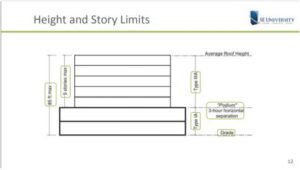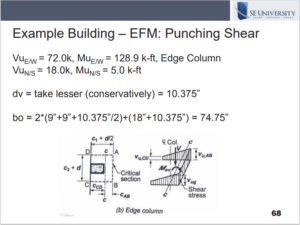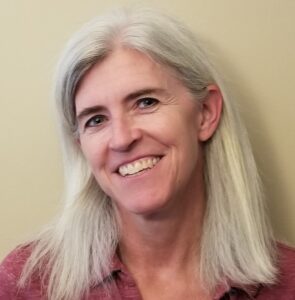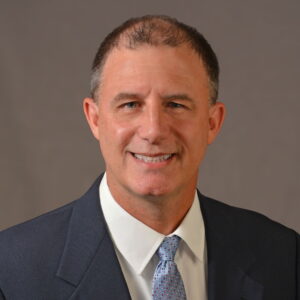15 Feb 2022
Steel Joist Bridging FAQs Answered
Steel joist bridging plays an important role in the overall strength of a joist system. Bridging provides lateral stability during erection and when chords are not fully braced during the application of loads. However, conflicts are common when locating bridging on drawings, in the field, and during retrofits. How should engineers address or avoid these common occurrences?
In the November 2021 SEU Session, Tim Holterman, PE, SE, from Canam Steel, and Bruce Brothersen, PE, SE, from Vulcraft, representing the Steel Joist Institute, presented Bridging and Steel Joists (How it Works and What to Work Around). They covered the types and roles of bridging and the governing criteria for bridging spacing and sizing. Connection details, common conflicts and resolutions were also highlighted.
Tim and Bruce addressed many common pitfalls in regard to steel joist bridging and provided guidance for these problematic situations. Below are several frequently asked questions along with an explanatory graphic to solve these dilemmas.
How close is close enough to the first bottom chord panel point for the first row of uplift bridging?
Can I hang a supported ceiling from steel joist bridging?
Can I brace the top of a partition wall to steel joist bridging?
How should I address a bridging discontinuity for ductwork or other equipment?
Can an additional, external wind force be transferred through the joist bridging?
Bridging is bracing and it is essential to the structural integrity of the steel joist system. Engineers can ensure their joist system stays structurally sound by proper placement of bridging, as well as avoiding discontinuities or applying any additional loads to these slender braces.
14 Feb 2022
SE Solutions Provides Scholarships to 2 MSCE Structures Students from Purdue University (2022)
 SE Solutions was pleased to recently present scholarships to two Purdue University Structures students to help defray the cost of their education. Nichole Criner and Benjamin Wogen were the recipients of the awards. This is the tenth year that SE Solutions has offered the scholarships.
SE Solutions was pleased to recently present scholarships to two Purdue University Structures students to help defray the cost of their education. Nichole Criner and Benjamin Wogen were the recipients of the awards. This is the tenth year that SE Solutions has offered the scholarships.
Nichole Criner is from Grove City, OH and she became interested in civil engineering when doing a balsa wood bridge design/build project in high school. After working for a structural engineering design firm during her co-op rotations while attending University of Cincinati, she decided to pursue a degree in structural engineering. She received her Bachelor of Science in Civil Engineering in May 2021 from the University of Cincinnati and she plans to graduate with her MSCE from Purdue University in May 2023. She is currently researching the physical and cost implications of defects occurring during construction of concrete bridge decks. After graduation, she plans to begin her career back in Ohio.
Benjamin Wogen graduated with his bachelor’s degree in Civil Engineering with an emphasis in structures from Purdue University in 2021, and has continued into a master’s program. He plans to defend a thesis and graduate in the Spring of 2023. As an undergraduate, he had the opportunity to do research with RETHi, a NASA-funded research institute looking into new technologies for developing extra-terrestrial structures on Earth’s moon and Mars. He is continuing to assist this project in his graduate studies as an operations coordinator. His thesis work will involve leveraging machine learning and computer-vision capabilities to increase the efficiency and effectiveness of structural inspections. Additionally, he completed internships at several site-design and construction companies, including work on deep foundations and natural gas facilities. After graduating with his master’s degree, he is interested in working in the structural design industry where he can continue to develop a deeper understanding of buildings and other structures.
SE Solutions would like to congratulate each recipient and wish them future success in their fields of study as structural engineers.
In January 2022, SEU welcomed Brad Fletcher, SE from Atlas Tube, to present HSS Bolted Connections. Brad designated the American Red Cross (https://www.redcross.org/) for our SEU Speaker Inspires donation for the month.
Brad shared “With the recent devastation in the southern US from late fall storms and tornadoes, we are reminded how the climate is changing and how it could potentially directly affect all of us. It also reminds us how fragile life can be and there may be times we will need the assistance of others. I believe in supporting the American Red Cross as they will always be there to lend a hand to those that are affected by these natural disasters.”
Thank you, Brad, for helping structural engineers with your SEU session, and for your designation of the American Red Cross as our SEU Speaker Inspires Organization of the Month!
SEU began the SEU Speaker Inspires program in 2015 as a way to “pay it forward”, enabling our speakers to designate a charity/organization of their choice for SEU to make a donation to help improve our world.
As we start the new year, we’d like to thank our structural engineering community for partnering with us to support various causes to make the most impact. As 2021 concluded, SE Solutions was able to support Brooke’s Place in Indianapolis, Team Western Kentucky Tornado Relief Fund, Feeding America, Purdue University Civil Engineering, and Purdue University Bowen Structures Lab Student Advisory Council. Click on the links to the websites below to learn more about these important organizations.
Brooke’s Place in Indianapolis, IN (brookesplace.org) exists to serve youth who have experienced the loss of a loved one. Their mission statement is to provide support groups, therapy services and community education to empower children, teens, young adults, and their families to thrive in the midst of their grief. At Brooke’s Place, children learn to honor and cherish the loved ones that they carry in their heart. Through peer support groups and therapy services (individual/family counseling), children learn they are not alone. SE Solutions is proud to support an organization caring for vulnerable youth in Indianapolis.
Team Western Kentucky Tornado Relief Fund (TeamWKYReliefFund.ky.gov) was created in response to the devastating tornado and severe weather activity that occurred on the night of December 10, 2021. At more than 200 miles long, the storm event was the longest tornado track on record and the largest in Kentucky history and resulted in the deaths of more than 75 people. As the effort to rebuild these communities begins, SE Solutions is honored to provide some relief to the many people affected by these storms.
Feeding America (https://www.feedingamerica.org/) is the nation’s largest domestic hunger-relief organization—a powerful and efficient network of 200 food banks across the country. The hunger crisis in this country has reached new heights since the pandemic began. SE Solutions chose to support Feeding America during the COVID-19 pandemic as a way to support families who have been impacted by the economic crisis.
SE Solutions had been a long time supporter of Purdue University Civil Engineering Department and their students. Each year, SE Solutions awards several student scholarships to well deserving engineering students, and this year SE solutions also provided support to the Bowen Structures Lab Student Advisory Council (https://engineering.purdue.edu/Bowen/BSAC). From their website, the Bowen Laboratory Student Advisory Council (BSAC) was founded in 2010 with the purpose of increasing interaction between students and the faculty/administration working at the Bowen Laboratory at Purdue University. BSAC is committed to involving engineering students in all phases of engineering education and serves to build the partnership between students, faculty, administrators and alumni in continuing to build Purdue Engineering’s excellence in education, research, and service. SE Solutions is excited to support the future of structural engineering and their academic research initiatives.
In 2022, SE Solutions looks forward to new opportunities to ‘pay it forward’ to our structural engineering community and throughout our nation. Cheers to a brighter future together!
While podium structures have gained in popularity in North America in recent years, engineers should be aware of the limitations set on building height for these wood over podium structures within the code.
In the April 2021 SE University session, Ashley Cagle, PE, SE, from WoodWorks, presented Structural Engineering of Light Frame Wood Over Concrete Podium Structures. Ashley reviewed code provisions from IBC and ASCE 7 that allow and limit podium-type structures. She also highlighted the implications of using fire retardant-treated wood in exterior wall assemblies of Type III construction and explained important issues that must be considered when designing mid-rise wood structures. Ashley showed effective detailing practices for wood shear wall tie-down attachments to concrete podium slabs during the session as well.
Ashley walked through the various code provisions which allow for maximizing the building height of a light frame wood over concrete podium structure. First, Ashley noted that Chapter 5 in the IBC specifies the maximum building height, number of stories and building area allowed based on occupancy, construction type, and the use of sprinklers. For new residential structures, sprinklers are required and the options are either NFPA 13R sprinklers, which are a residential sprinkler which restricts the height to 60 ft and 4 stories, or NFPA13 sprinklers which allow for an increase in building height by 20 ft., an increase of one additional story, and an increase in area of up to 3 times the square footage. (Note: For projects in California, the CBC does not allow the building height/additional story to be applied concurrently with the area increase, unless additional firewalls are provided.)
IBC Chapter 3 addresses occupancy, and Ashley noted these structures tend to have a lower concrete or steel portion that lends itself well to parking or commercial/retail space, while the upper wood portion tends to be mostly residential or hotel use. IBC Chapter 6 contains prescriptions for construction type, where type I/II is non-combustible, type III requires exterior walls to be non-combustible, type IV is heavy timber, and type V is any material allowed by code. Furthermore, subcategories A and B can be applied to types I,II, III, and V construction with A denoting an extra 1-hour fire rating on most primary and secondary structural elements over the requirements of type B. The building height limits are displayed in IBC Tables 504.3 and 504.4 or as shown below from Ashley’s example in her presentation. For type III construction, fire-retardant treated wood can be used as a non-combustible material to satisfy this provision.
At the end of IBC Chapter 5, Section 510.2 lists a number of provisions for mixed occupancy and this section allows that “A building shall be considered as separate and distinct buildings” if there is a 3-hour fire-rated horizontal separation, it is construction Type IA below the separation and group A occupancy above the separation, and a 2-hour fire rating exists for any vertical shaft penetrating through the horizontal separation. Thus, Ashley provided the following graphic showing the building height possibilities with a light-frame wood over concrete podium structure.
As you can see, using an upper building type IIIA construction, over a Type IA lower structure, one can achieve a 5 story upper structure with 85 feet of total building height measured from grade when a 3-hour fire-rated horizontal separation is provided between the two separate and distinct structures. These two structures can then be analyzed according to the two-stage lateral analysis detailed in ASCE 7 Section 12.
Wood over podium structures have gained in popularity in recent years, and Ashley offered additional resources for engineers who find themselves with questions on these mixed-use or mid-rise wood buildings which can be found free of charge at WoodWorks.org. One resource that Ashley specifically mentioned is a published design example for a Five-Story Wood-Frame Structure over Podium Slab. When designing these structures, it is important to have an understanding of the building height requirements, and know how construction types and occupancy can impact the allowable building height.
29 Dec 2021
Punching Shear Review for Concrete Flat Plates
Punching shear checks are vital when using concrete flat plates due to the brittle nature of this failure mode. Punching shear failure can be avoided by increasing the slab depth or incorporating other shear enhancement techniques, but are these enhancements necessary or does the flat plate have enough capacity on its own?
In the September 2021 SEU session, Michael E. Sheridan, PE, SE, from Allen & Hoshall, Inc., presented Concrete Flat Plate Design. Michael explained the basic concepts of nonprestressed, flat plate load distribution using the Equivalent Frame Method (EFM) as defined in ACI 318-14. He also covered design processes including loads, live load reduction, slab thickness and punching shear for concrete flat plates.
Michael walked through an example for determining the punching shear capacity of a flat slab at an edge column interface. The shear and moments applied to this column have already been determined by using the Equivalent Frame Method. Since this is an edge column, the critical punching shear stress will be a combination of the direct shear stress from each of the contributing column strips as well as the shear resulting from the applied moments in each direction. The result of these combined forces will be determined at each corner of the critical section.
For the 18 inch square column, the critical section, bo equals 74.75 inches and the depth, dv is taken conservatively as 10.375 inches for the 12.5 inch slab. Michael determines the distance to the centroid, X to be 7.193 inches and can then calculate the moments of inertia in both directions.
Using the applied shear force, the critical section and depth of the slab, the direct shear stress, v, is calculated to be 116 psi. For each corner of the critical section, the contributing shear due to the applied moments in each direction are calculated using Mc/I.
The total applied shear stress exceeds the allowable shear capacity as determined by Chapter 22 of ACI 318, thus the slab fails the punching shear check for this edge column for the applied loads. Either the total slab depth would need to be increased, or the engineer could explore the use of stud rails, shear heads or drop panels to avoid a sudden punching shear failure in this building.
In December 2021, SEU welcomed Don Scott, PE, SE, from PCS Structural Solutions, and Cherylyn Henry, PE, from Zapata, to present ASCE 7-16 Wind (plus Updates). Don and Cherylyn designated the SEI Futures Fund (https://www.asce.org/communities/institutes-and-technical-groups/structural-engineering-institute/futures-fund) for our SEU Speaker Inspires donation for the month.
Cherylyn shared “The SEI Futures Fund has provided an invaluable opportunity for students and young professionals to engage in the structural engineering profession. The Fund’s dedication to advancing our profession through the next generation of engineers has benefited practitioners and academics alike, through scholarships to attend Structures Congress and funding to serve on Codes and Standards Committees. I have witnessed the increased involvement of young professionals in our profession and it’s been incredibly exciting!”
Thank you, Don and Cherylyn, for helping structural engineers with your SEU session, and for your designation of the SEI Futures Fund as our SEU Speaker Inspires Organization of the Month!
SEU began the SEU Speaker Inspires program in 2015 as a way to “pay it forward”, enabling our speakers to designate a charity/organization of their choice for SEU to make a donation to help improve our world.
In November 2021, SEU welcomed Tim Holtermann, PE, SE, from Canam Steel, and Bruce Brothersen, PE, SE, from Vulcraft, on behalf of the Steel Joist Institute, to present Bridging and Steel Joists. Bruce designated Utah State University Civil Engineering Department Steel Bridge Team (https://engineering.usu.edu/cee/) for our SEU Speaker Inspires donation for the month.
Bruce shared “There is a lot more to the education of engineers than learning equations and running numbers. Anytime student engineers can be involved with projects that require innovation, collaboration and teamwork, like the bridge team as USU, a donation is a great investment in the engineering learning process.”
Thank you, Bruce, for helping structural engineers with your SEU session, and for your designation of the Utah State University Civil Engineering Department Steel Bridge Team as our SEU Speaker Inspires Organization of the Month!
SEU began the SEU Speaker Inspires program in 2015 as a way to “pay it forward”, enabling our speakers to designate a charity/organization of their choice for SEU to make a donation to help improve our world.
In October 2021, SEU welcomed Susan Burmeister, PE, from S2B Structural Consultants, to present Camber – Design and Construction. Susan designated Engineers without Borders (https://www.ewb-usa.org/) for our SEU Speaker Inspires donation for the month.
Engineers Without Borders USA builds a better world through engineering projects that empower communities to meet their basic human needs. Their highly skilled volunteers work with communities to find appropriate solutions for their infrastructure needs.
Thank you, Susan, for helping structural engineers with your SEU session, and for your designation of the Engineers without Borders as our SEU Speaker Inspires Organization of the Month!
SEU began the SEU Speaker Inspires program in 2015 as a way to “pay it forward”, enabling our speakers to designate a charity/organization of their choice for SEU to make a donation to help improve our world.
In September 2021, SE University welcomed Michael E. Sheridan, PE, SE, SECB, from Allen & Hoshall, to present Concrete Flat Plate Design. Mike designated Grace to You (https://www.gty.org/) for our SEU Speaker Inspires donation for the month.
Mike shared “My life has changed so dramatically in the last 30 years, when Jesus Christ intervened into my life with the truth of the gospel. This one major turning point in my life came through the truth found in Holy Scripture. John MacAruthur is the Chancellor of the Master’s College and Bible Teacher of the Grace to You ministry. I listen to Grace To You on the radio and podcasts daily and it is a significant augmentation to my ongoing Bible studies. So, whenever I get a chance to come into some extra money, I support their work at Grace to You. I hope this donation will help their work to continue in the sharing of Jesus Christ and the truth found in Him.”
Thank you, Mike, for helping structural engineers with your SE University session, and for your designation of Grace to You as our SEU Speaker Inspires Organization of the Month!
SE University began the SEU Speaker Inspires program in 2015 as a way to “pay it forward”, enabling our speakers to designate a charity/organization of their choice for SE University to make a donation to help improve our world.

















